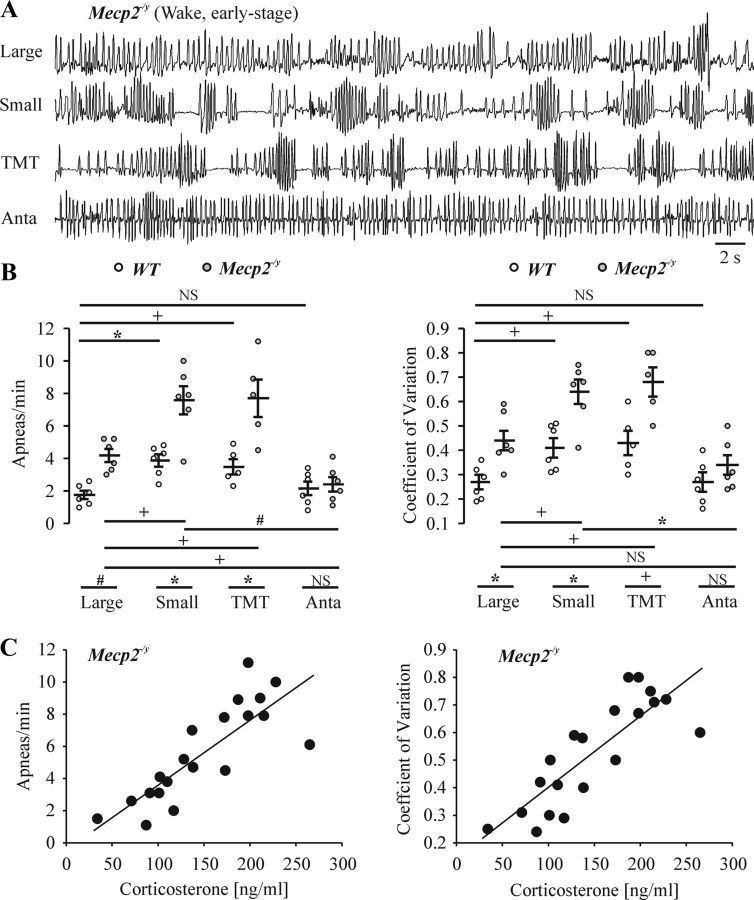Figure 4.
Respiratory patterns of WT and early-stage Mecp2−/y mice in response to stress. A, Representative whole-body plethysmographic recordings of Mecp2−/y mice during wakefulness at early stage in the large chamber, the small chamber, during exposure to TMT (0.5 μl, in the large chamber), or treatment with antalarmin (Anta; 10 mg/kg, i.p., in the small chamber at 40 min after drug administration). B, Population data showing apneas per minute and coefficient of variation of frequency for WT and early-stage Mecp−/y mice during quiet wakefulness in large (n = 6 each) and small (n = 6 each) plethysmographic chambers, exposure to TMT (in the large chamber, n = 5 each) or administration of antalarmin before placement in the large (n = 3 each) or small chamber (n = 3 each). NSp ≥ 0.05, +p < 0.05, and *p < 0.01 between two groups. C, Correlation between the severity of respiratory dysfunction (apneas minute, coefficient of variation of frequency) and measures of stress (blood corticosterone level) in Mecp2−/y mice. Data from large chamber (n = 3), small chamber (n = 6), TMT exposure (in large chamber, n = 5), and antalarmin treatment (in large and small chamber, n = 3 each) pooled together for analysis. Correlation coefficient was 0.87 and 0.83 for apneas per minute and coefficient of variation of respiratory frequency against blood corticosterone level, respectively, with p < 0.001.

